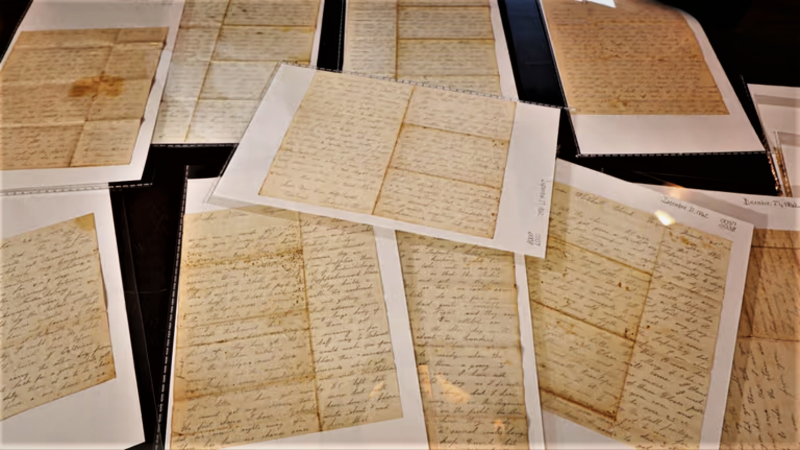



The Preservation Process
By Victoria Berger
Historical Society of Islip Hamlet Curator
Executive Director of the Suffolk County Historical Society
The process of document preservation is vital to historic documents, to slow or arrest the aging process and prevent further deterioration of the original fragile document fibers. Proper preservation also minimizes or prevents future handling of the document. Preservation differs from conservation work, in that preservation efforts extend the life of documents, while conservation is a term used to describe the treatment and correction of damaged artifacts.
First, the folded letters are carefully unfolded and allowed to relax under light humidity conditions, then gently pressed to ease out folds and creases. The preservation process is slow and gentle, to allow for the most natural relaxation of the tightly-folded letters, without forcing the paper fibers which could lead to cracking and separation of the paper folds.
Once flattened, they are digitized, front and back. Each document is then preserved by being slipped into an acid-free, non-off-gassing protective sleeve. These sleeves are generally made of polyester, which will minimize further exposure to the document. An absorbent alkaline buffering paper is placed behind the document, to allow absorption of any oils, acids, or environmental chemicals to be absorbed away from the historic document. The protective sleeves have an open side, to allow for breathing. (Old, outdated techniques like laminating documents into sealed, air tight sleeves, along with the practice of wearing gloves during the handling, have been proven to cause more harm to documents, and are not recommended.) Inside protective sleeves, the documents are stored on their sides – to avoid compression -- in rigid, acid-free file folders, in alkaline preservation storage file boxes.
Preserving and digitizing this collection will allow for continued research and sharing of the documents, while protecting the originals from further aging, handling, and environmental exposure, so that they may be enjoyed by future generations.

Photo Credit: Newsday/John Paraskevas